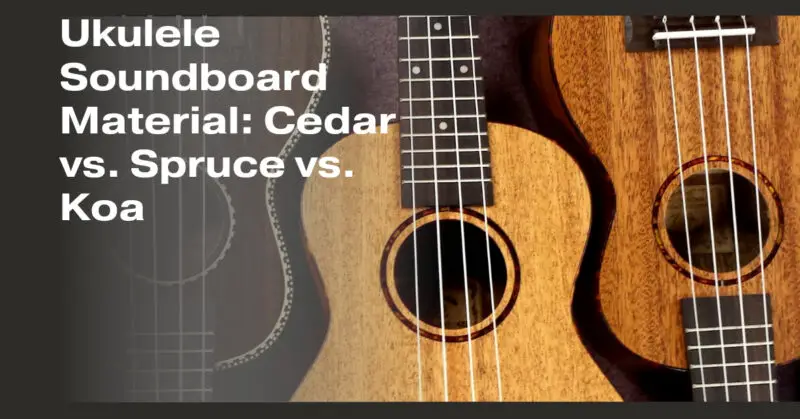The choice of soundboard material is a critical factor in determining the tone and character of your ukulele. Among the various woods available for ukulele soundboards, cedar, spruce, and koa are some of the most popular options. In this article, we’ll explore the characteristics of these wood choices to help you make an informed decision when selecting your ukulele.
Cedar Soundboard:
- Warm and Mellow Tone: Cedar is known for its warm and mellow tone. It produces a rich, full-bodied sound with a balanced tonal range.
- Quick Responsiveness: Cedar soundboards are highly responsive, making them ideal for fingerstyle playing and nuanced articulation.
- Aging Well: Cedar tends to improve with age, allowing your ukulele’s sound to mature over time, becoming even richer and more resonant.
- Ideal for Recording: Many musicians favor cedar ukuleles for recording due to their warm and clear tonal qualities.
Spruce Soundboard:
- Bright and Articulate: Spruce soundboards are known for their bright and articulate tone. They provide a clear, focused sound with excellent note definition.
- Versatile: Spruce is a versatile wood choice that works well for various playing styles, from strumming to fingerpicking.
- Great Volume: Spruce ukuleles tend to have good volume and projection, making them suitable for both solo and ensemble playing.
- Aging Benefits: Similar to cedar, spruce can also improve with age, offering enhanced tonal complexity over time.
Koa Soundboard:
- Unique and Rich Tone: Koa is the traditional wood choice for Hawaiian ukuleles and is revered for its unique and rich tonal character. It produces a bright and sweet sound with a pronounced midrange.
- Excellent Sustain: Koa ukuleles often have exceptional sustain, allowing notes to ring out beautifully.
- Distinctive Appearance: Koa wood is prized not only for its tonal qualities but also for its stunning, visually distinctive grain patterns.
- Ideal for Hawaiian Music: Koa ukuleles are particularly well-suited for traditional Hawaiian music and lend an authentic Hawaiian sound.
Choosing Between Cedar, Spruce, and Koa:
When deciding between cedar, spruce, and koa soundboards, consider the following factors:
- Tonal Preference: Think about the tonal qualities you prefer. Cedar offers warmth, spruce provides brightness, and koa delivers a distinctive sweetness.
- Playing Style: Consider your playing style. Cedar and spruce are versatile, while koa might be an excellent choice if you’re dedicated to playing Hawaiian music.
- Budget: Koa ukuleles are often more expensive due to the rarity and desirability of koa wood. Cedar and spruce ukuleles may offer more budget-friendly options.
- Aesthetics: If the visual appeal of your ukulele is essential to you, koa’s beautiful grain patterns can be a significant draw.
- Sound Projection: Think about your playing environment. If you need strong sound projection, spruce might be a suitable choice.
Ultimately, the best soundboard material for your ukulele depends on your personal preferences, playing style, and musical goals. Trying out different wood options and listening to their tonal differences can help you find the perfect ukulele to suit your needs.

